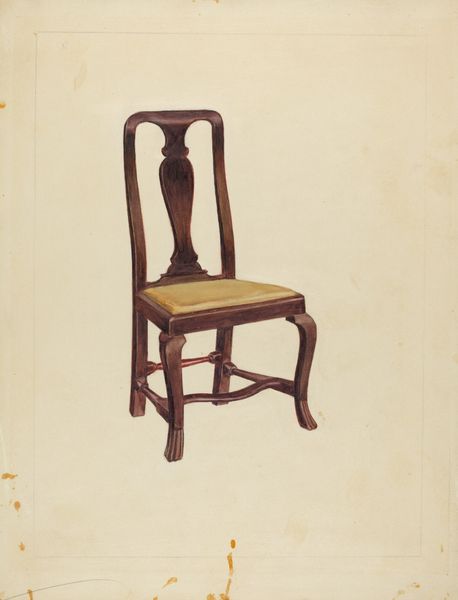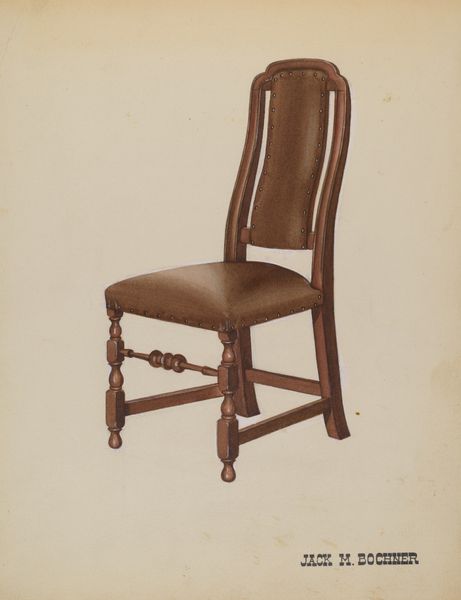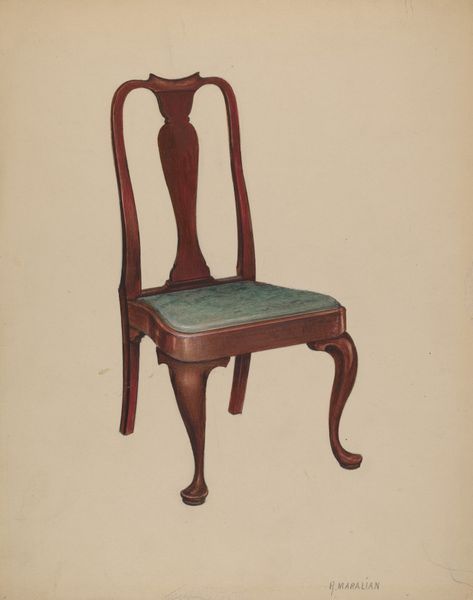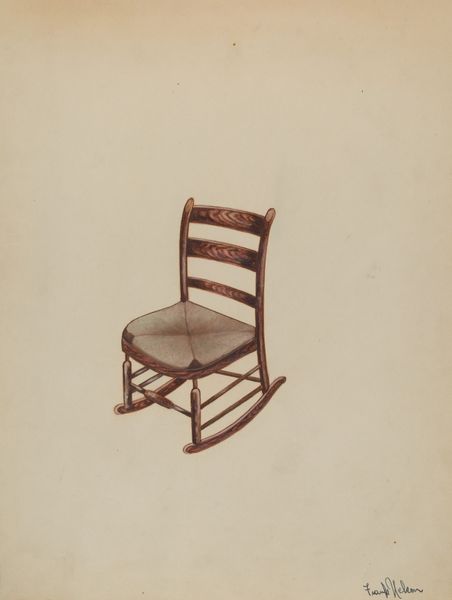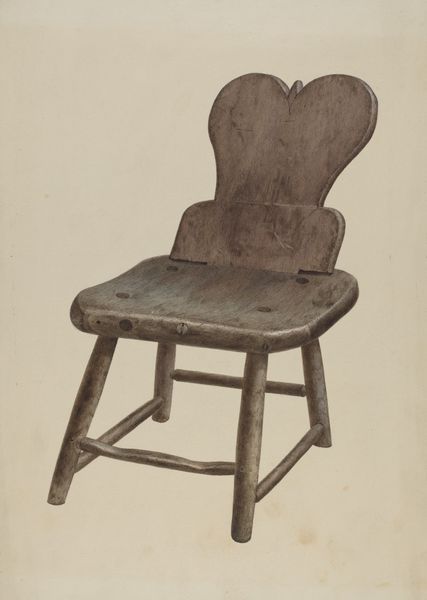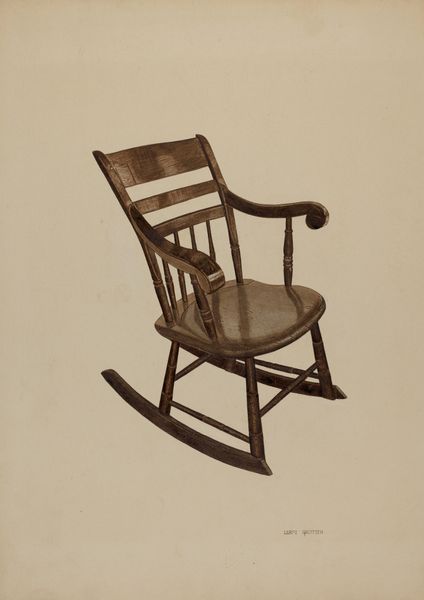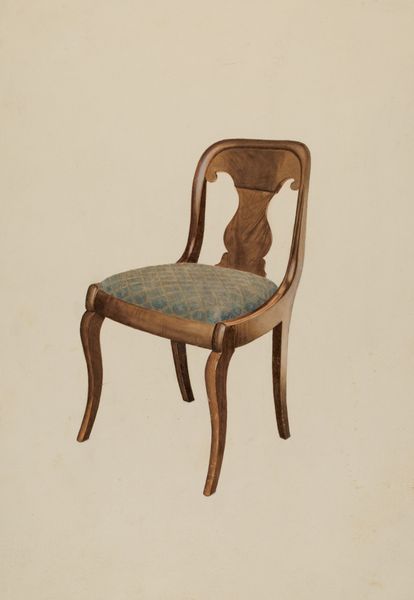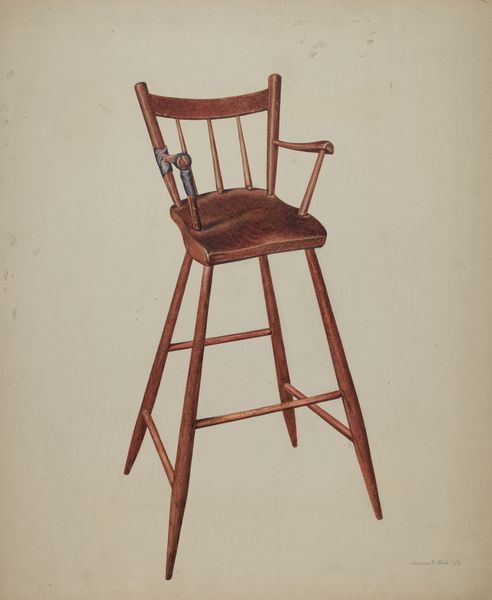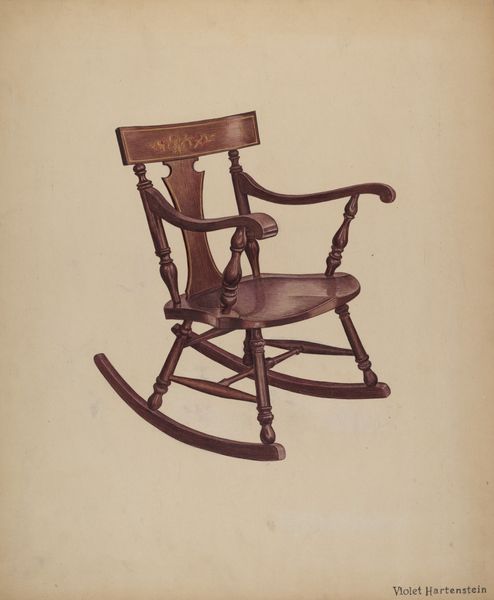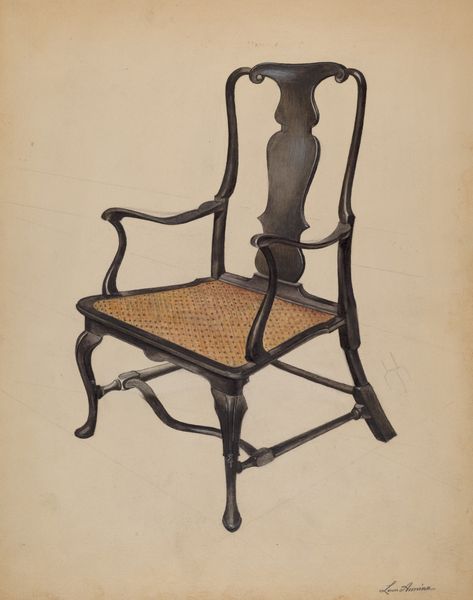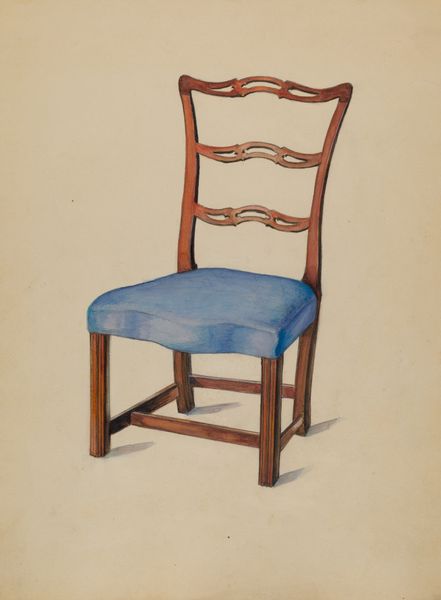
drawing, tempera
#
drawing
#
tempera
#
academic-art
Dimensions: overall: 30.1 x 25 cm (11 7/8 x 9 13/16 in.) Original IAD Object: none given
Copyright: National Gallery of Art: CC0 1.0
Curator: Here we have William Paul Childers's "Chair," created sometime between 1935 and 1942, employing drawing and tempera techniques. Editor: You know, the first thing that strikes me is how unassuming it is. A chair. Not even a fancy throne, just...a chair. It's quiet, you know? Calm. Curator: Indeed. But the humble nature of the subject is part of its potential strength. It offers a chance to explore the design principles during the time it was made, and possibly how even mundane objects become art subjects. Editor: Good point! But there's something sad about the solitude here. Just this one lonely chair on a light backdrop. What do you think, was it meant to show it like it stands for solitude in those hard times? Curator: It is possible, especially as it was conceived during or just after the Great Depression. Everyday objects in art often mirrored or commented on social realities. Could it also be read in relation to furniture design movements and economic accessibility, like the Bauhaus project that hoped for art in the design and construction of even modest household furniture? Editor: Well, looking at the wooden curve and that simple seat, maybe it stands for simplicity as such... There's almost a purity in its functionality. It’s like a distillation of what a chair fundamentally is. So it makes me think it may symbolize a quest to escape excess in times of financial crysis. Curator: Absolutely. In some artistic circles during periods of societal upheaval, such distillation of form did reflect an urge toward socialist ideas and democratic art practices. Editor: I love it. It's made me think so much about chairs now. Not just as things to sit on, but as artifacts. A snapshot of lives. And here’s where, perhaps, the artist may have given voice to social experiences with few material belongings and not even a room for more than a chair... Curator: Indeed, objects speak volumes. Seeing the history through the material is what this work invited. Editor: Well said!
Comments
No comments
Be the first to comment and join the conversation on the ultimate creative platform.

